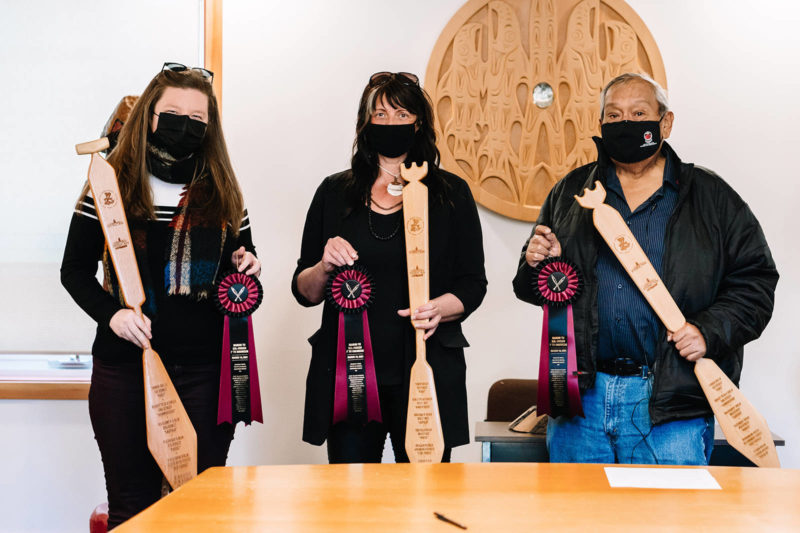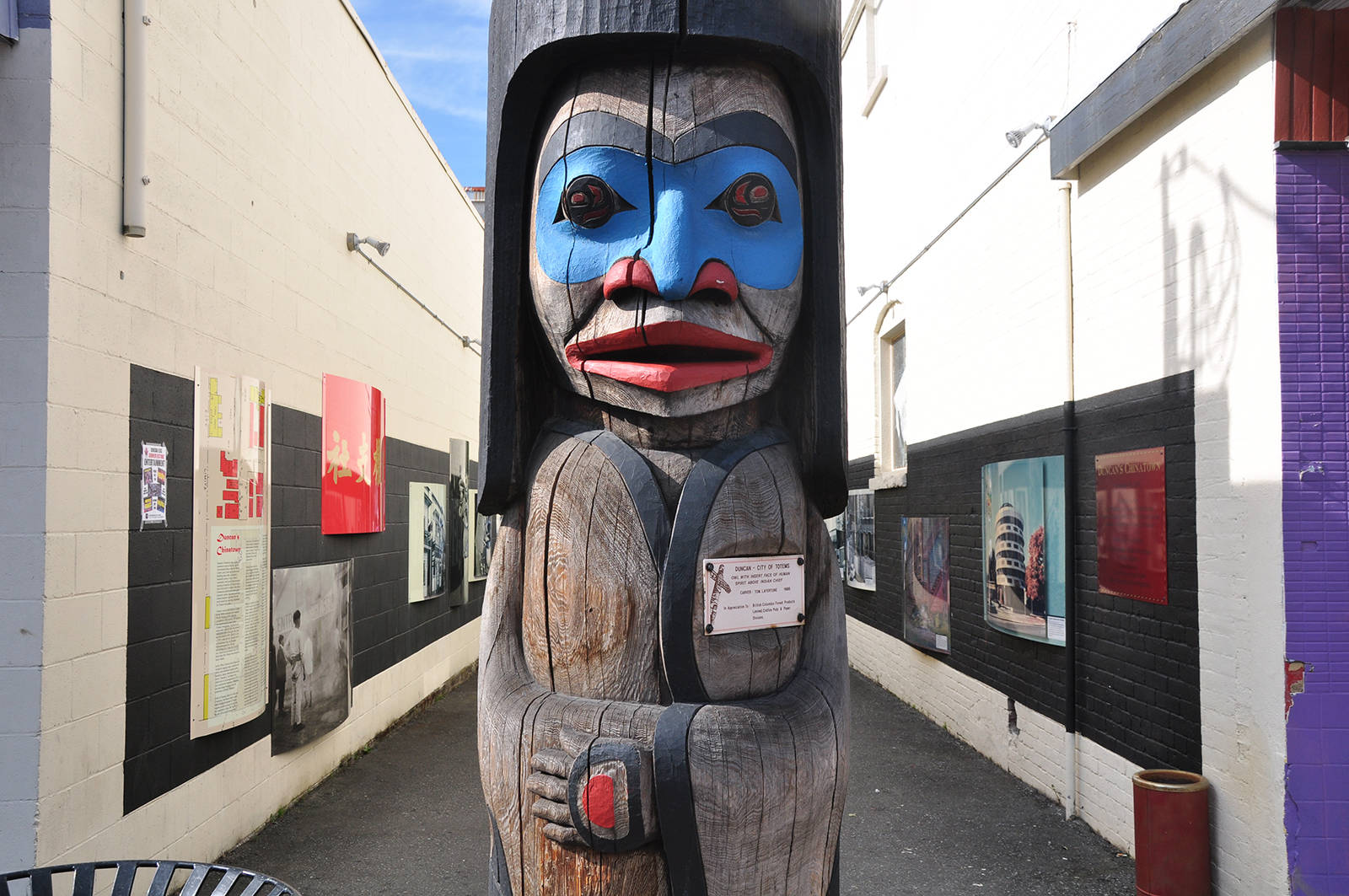Visitors to downtown Duncan are finding a new way to explore the region’s Indigenous history and culture.
A recent initiative between Downtown Duncan Business Improvement Association, Cowichan Tribes and the City of Duncan brought the installation of 30 bilingual Hul’q’umi’num’ / English street signs on seven streets in downtown Duncan.
A short video was also created as a COVID-friendly way to mark the occasion virtually.
“I am so honoured to see these Hul’q’umi’num’ signs on our streets,” says Merle Seymour, a Cowichan Tribes elder and participant in the naming process. “This really uplifts our people. I really raise my hands to each and every one who was involved. Huy steep q’u.”
As you walk downtown Duncan’s streets, you’ll see the bilingual street signs on Station/Liloot Street, Government/Hwulmuhw Street, Canada/Q’lhan Avenue, First/Yuwen Street, Second / Sxwut’ts’ulii Street, Third/Smayuqw’a’ Street and Fourth/Thuthiqut Street.
Some names such as “Liloot” – which means “train” – reflect the nature of a particular street, in this case where the train station stood. Others, like “Sxwut’ts’ulii” – or “hummingbird” – reflect important elements of Indigenous culture.
“This really touches my heart,” says Lucy Thomas, another Cowichan Tribes elder involved in the project. “It is connecting me to my community in all kinds of ways you don’t know… I am really, really proud right now.”
A series of small, physically distanced gatherings with Downtown Duncan BIA executive director, Amanda Vance, Chief William Seymour, Mayor Michelle Staples and other project participants celebrated the installations. Ribbons and paddles were distributed to partners and quotes were collected for a short video that incorporates historical footage licensed from the Royal BC Museum and the Cowichan Valley Museum.
To encourage a greater depth of connection with the signage and history it represents, the Downtown Duncan BIA is also providing member businesses with pamphlets with QR codes linking to the school district’s website, where recordings will be available for the public to learn pronunciation of the Hul’q’umi’num’ street names.
“The best part of this project for me was seeing our community come together to work on it. I know we will continue working together moving forward,” Amanda Vance says.
In addition to the street signs, the downtown totem tour is another popular way for visitors to explore the Indigenous culture while strolling Duncan’s picturesque streets. More than 40 totems are featured – download a map for a self-guided tour here.
While the Hul’q’umi’num’ signage project does not resolve the question of land negotiations, partners do feel it is a positive step in the right direction.
“This is a great way to kickstart reconciliation,” Cowichan Tribes youth Kevannah Thorne says. “If you’re out walking with your kids, you could teach your young ones to learn more Hul’q’umiu’num’ at a younger age.”
Cowichan-Malahat-Langford MP Alistair MacGregor agreed. “This initiative does two really important things. First it allows us to really unpack and analyze the colonial history of this area. Secondly it helps us to celebrate the Indigenous language, culture and history that has been a part of this place for thousands of years.”












 Camping close to home still permitted under B.C. travel ban: Dr. Henry
Camping close to home still permitted under B.C. travel ban: Dr. Henry